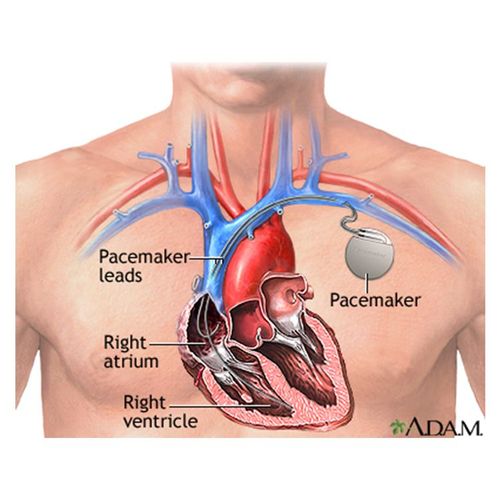Researchers say they have transformed embryonic stem cells into heart cells that could someday replace the electronic pacemakers that are implanted to keep hearts beating normally.
"By transplanting these human heart cells into the ventricle [heart chamber) of an animal, we can make them beat spontaneously," says Ronald Li, an assistant professor of medicine at Johns Hopkins Medical School and leader of the research group. "The implication is that eventually we could make a biological pacemaker to replace electronic pacemakers."
The Johns Hopkins work avoids the controversy over the use of human stem cells because it was done with a line of embryonic stem cells that were grown in a laboratory.
Background
While Li's research appears promising, "we need to be very careful in terms of launching human trials," he says. So far, implanting these stem cells has been done only in guinea pigs.
A first step in the research was to insert a gene into the embryonic cells that would like them produce a fluorescent green protein, so they could easily be distinguished from animal cells.
The glowing cells were given a treatment that transformed them into heart cells. The researchers then selected clusters of the cells that were beating on their own and implanted them in the hearts of guinea pigs.
The animals' own pacemaking cells were destroyed by freezing a few days later. Electrical measurements showed a new beat, at a rate slower than the animals' normal beat and closer to that of the human heart.
Studies then confirmed that the electrical signals that were controlling the heartbeat originated from the implanted cells.
What’s Next
The next step is to try to repeat these steps in large animals, such as pigs, whose hearts are more similar to those of humans, says Li. In addition, the implants must be followed for a prolonged period to be sure that they will not turn cancerous or be attacked by the immune system.
"So far, we have not seen rejection or tumor formation, but we have to do prolonged experiments to be sure," he notes.
Most efforts on stem cell therapy for the heart have used adult stem cells, generally harvested from bone marrow. But recent reports have not been encouraging.
Researchers at the University of Chicago have reported that while bone marrow stem cells migrate into the heart, they do not mature into new cardiac muscle cells—finding that was echoed in a similar study by Swedish researchers.
Artificial Heart Saves Lives Of Transplant Patients
The US Food and Drug Administration (FDA) has approved a partial artificial heart designed to keep people alive in the hospital while they await a heart transplant.
The device-intended as a "bridge to transplant" for people who have not responded to other treatments and, therefore, are at high risk of dying from heart failure-is implanted into the chest to replace the patient's left and right ventricles, the bottom half of the heart.
Recipients are then connected by tubes that go from the heart through the chest wall to a large power-generating console, which operates and monitors the device.
The partial artificial heart is manufactured by Syncardia Systems Inc., Tucson. The company studied the use of the artificial heart in 81 patients who had severe heart failure. In those studies, 79% of the patients who received the partial artificial heart remained alive long enough to receive a donor heart (an average of 79 days), the FDA reports.
Approximately 4,000 patients in the United States await heart transplants annually, but only 2,200 donor hearts typically become available.
The FDA is requiring Syncardia Systems to conduct a post-approval study to monitor the device's performance in commercial use, the agency says.
